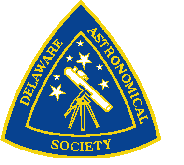

|
Don Shedrick |
Apr, 2000 |
April DAS Focus
COMPUTERS IN ASTRONOMY by Don Shedrick
Currently, there are not any of the major planets in easy observing locations in the sky. If you are suffering from planet observing withdrawal, you can go to The Nine Planets web site at operated by SEDS (Students for the Exploration and Development of Space) :
http://www.seds.org/nineplanets/nineplanets/nineplanets.html
The Nine Planets is an overview of the history, mythology, and current scientific knowledge of each of the planets and moons in our solar system. Each page has text and images, some have sounds and movies, and most provide references and links to additional related information. The information is intended for a general audience with little technical background. No special expertise or knowledge is needed; all technical and astronomical terms and proper names are defined in the glossary.
Association of Lunar & Planetary Observers
(ALPO - not to be confused with the dog food) has a web site geared for the more advanced astronomer at:http://www.lpl.arizona.edu/alpo/
This over 50 years old organization has developed the site for the latest observing information on all the planets as well as the sun, moon, asteroids, and comets. There are numerous links for each to many photographs and other information such as observing alerts and recent observations, and detailed observing maps.
Lunar Phase, available on the Internet at the Night Sky Observer's site of Irish amateur astronomer Gary Nugent:
http://www.nightskyobserver.com/LunarPhase/index.htm
This program is written by the same author who wrote JupSat, featured earlier in this column and looks very similar. This program displays, for any selected date and time, the moon & sun rise, set & transit times, as well as the lunar location coordinates, phase, illumination fraction, distance, and age. There's even a graphic that shows you exactly what the moon looks like, with the option to view through binoculars or a telescope. Flipping through the months will pop up an eclipse icon when a lunar eclipse occurs; clicking on that icon brings up a screen detailing the circumstances of that eclipse. It also calculates and displays start and end times for Civil, Nautical and Astronomical Twilight.
Finally we have two web sites that provide an armchair tour of our moon.
The Moon, as Shakespeare’s Juliet laments in Romeo and Juliet, is inconstant. As it rapidly moves in its complex orbit across the sky, it is continually changing its appearance in both bold and subtle ways.
The Inconstantmoon at:
http://www.inconstantmoon.com/
will take you on a new tour each night with maps, photos, explanations, animations, physical data, and other links. The Inconstant moon displays a calendar which, when a date is selected, displays information on
what lunar features are best observed at that time, and shows as the moon waxes and wanes, how its features alter dramatically - rugged heights can turn to pale ghosts, tiny blemishes can become brilliant beacons, and thin beams can briefly shine across the lunar twilight. And while navigating this info, you can select from a menu of moon related music with choices ranging from Moonlight Sonata to Blue Moon.
The Hitchhiker’s Guide to the Moon at:
http://www.shallowsky.com/moon/hitchhiker.html
shows what portion of the moon’s surface is illuminated. When a specific region is clicked on, impressively detailed photographs, info and other links are displayed. Features described in The Hitchhiker's Guide to the Moon are referenced to the pages on which they appear in Antonin Rukl's Atlas of the Moon. In addition, there is a link to the largest listing of lunar related web sites that I have seen.